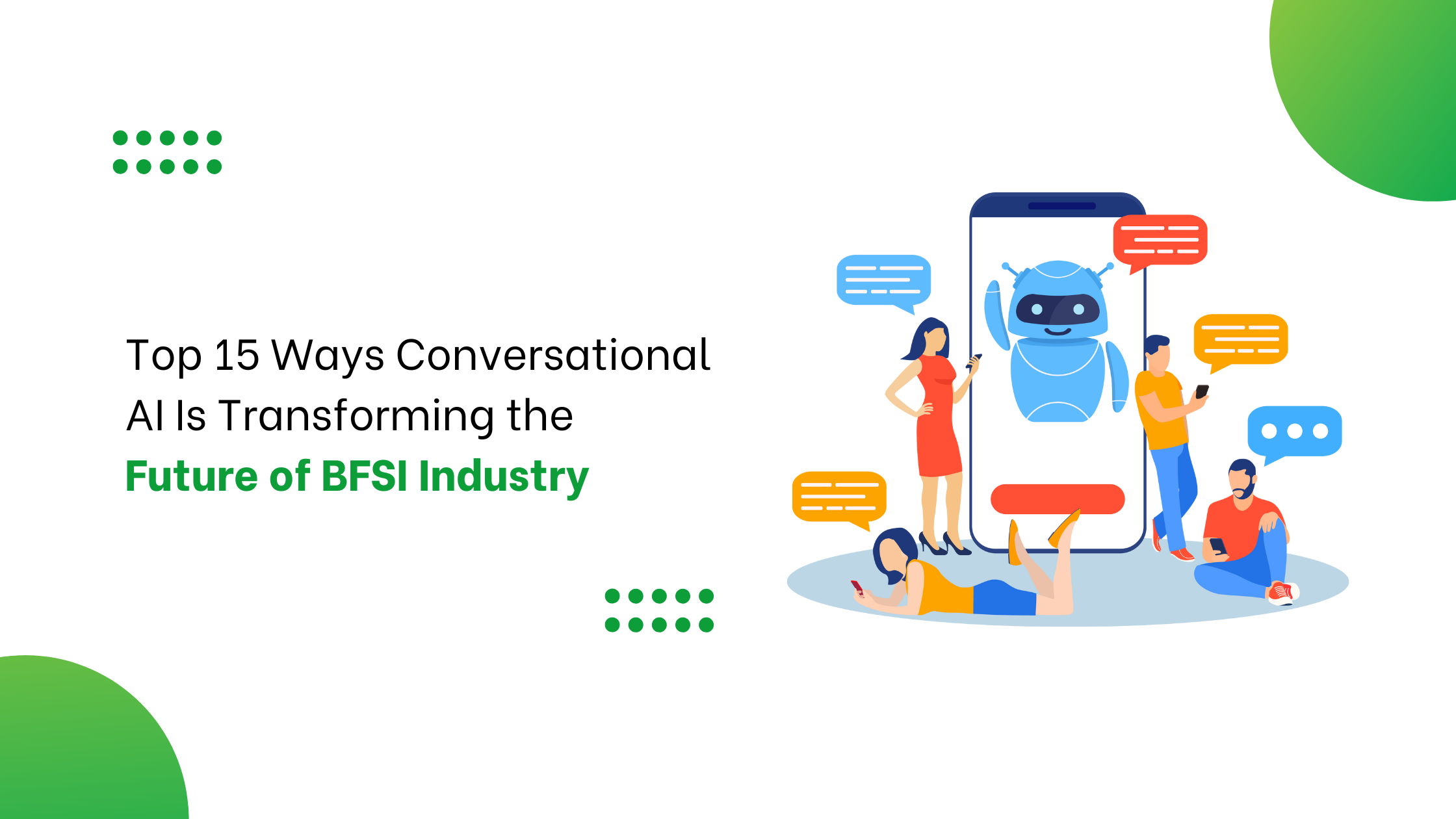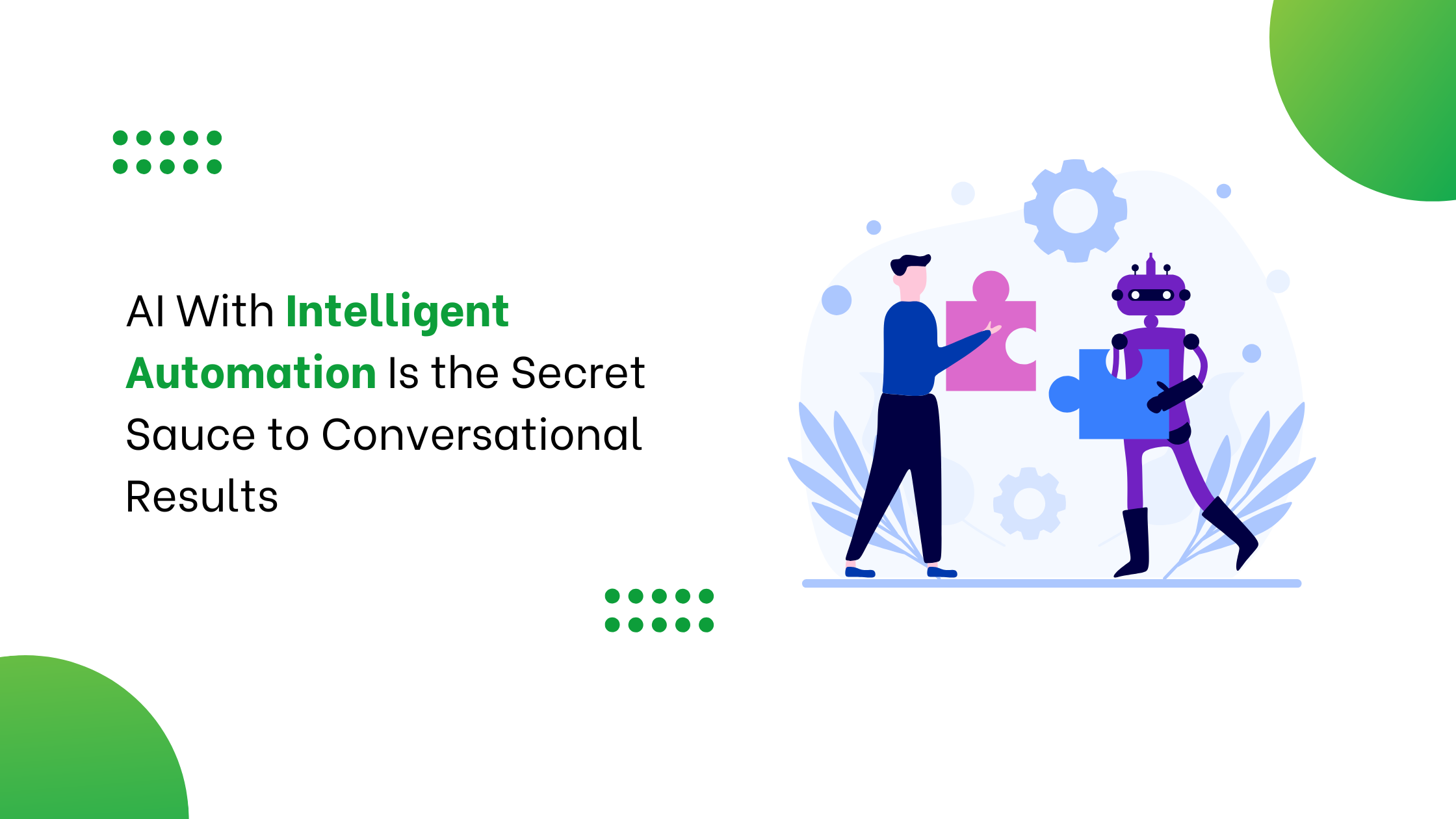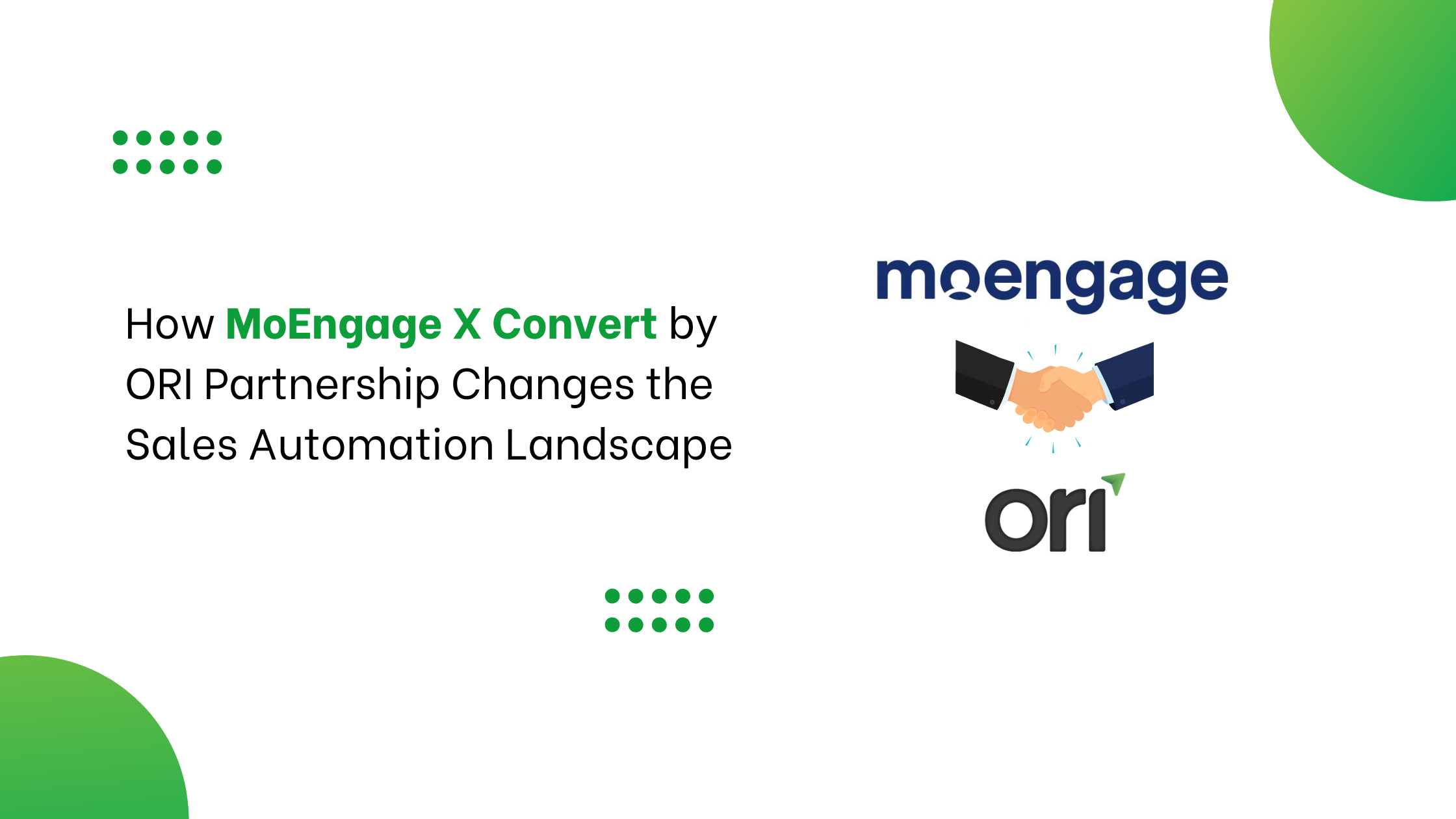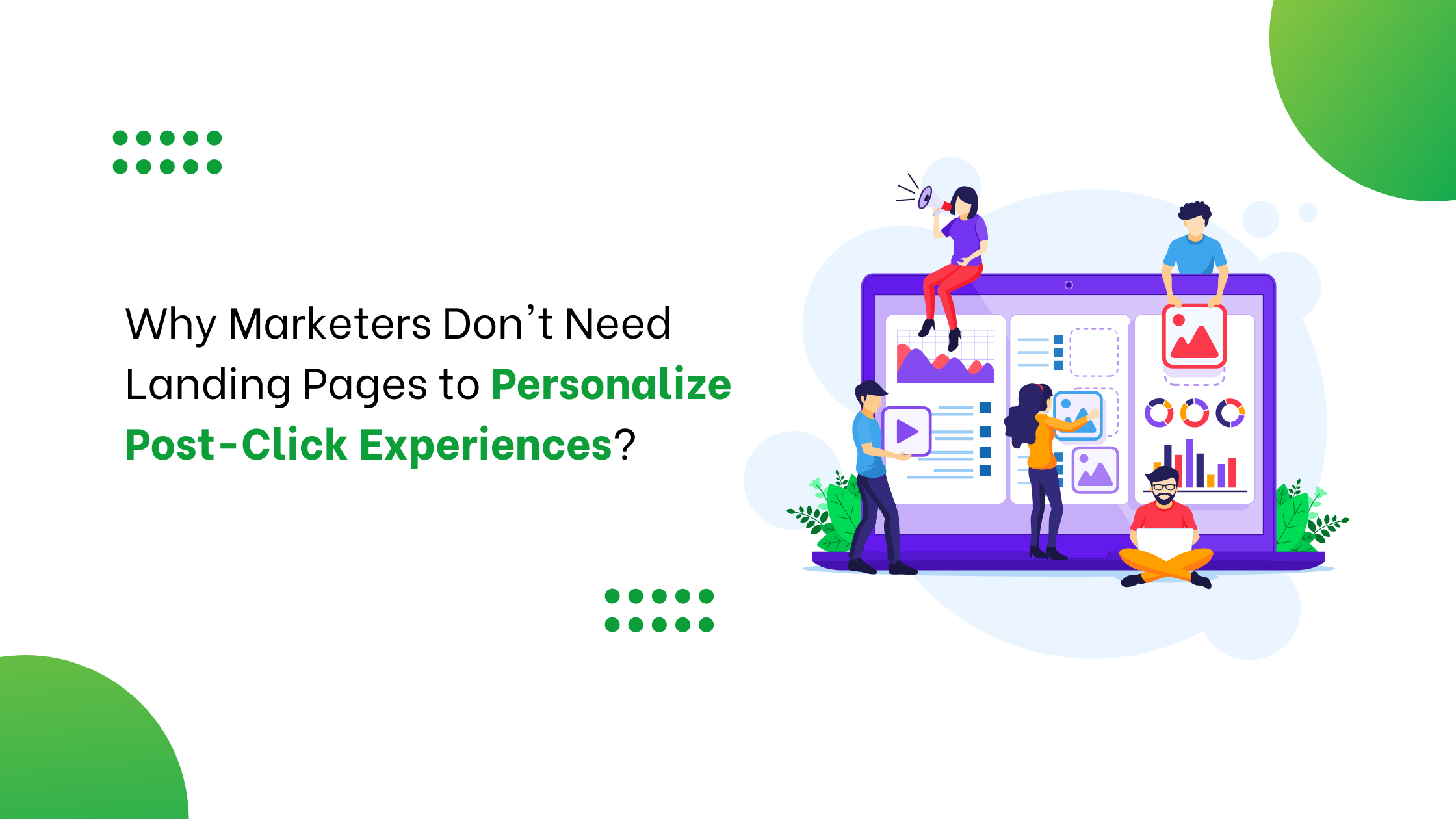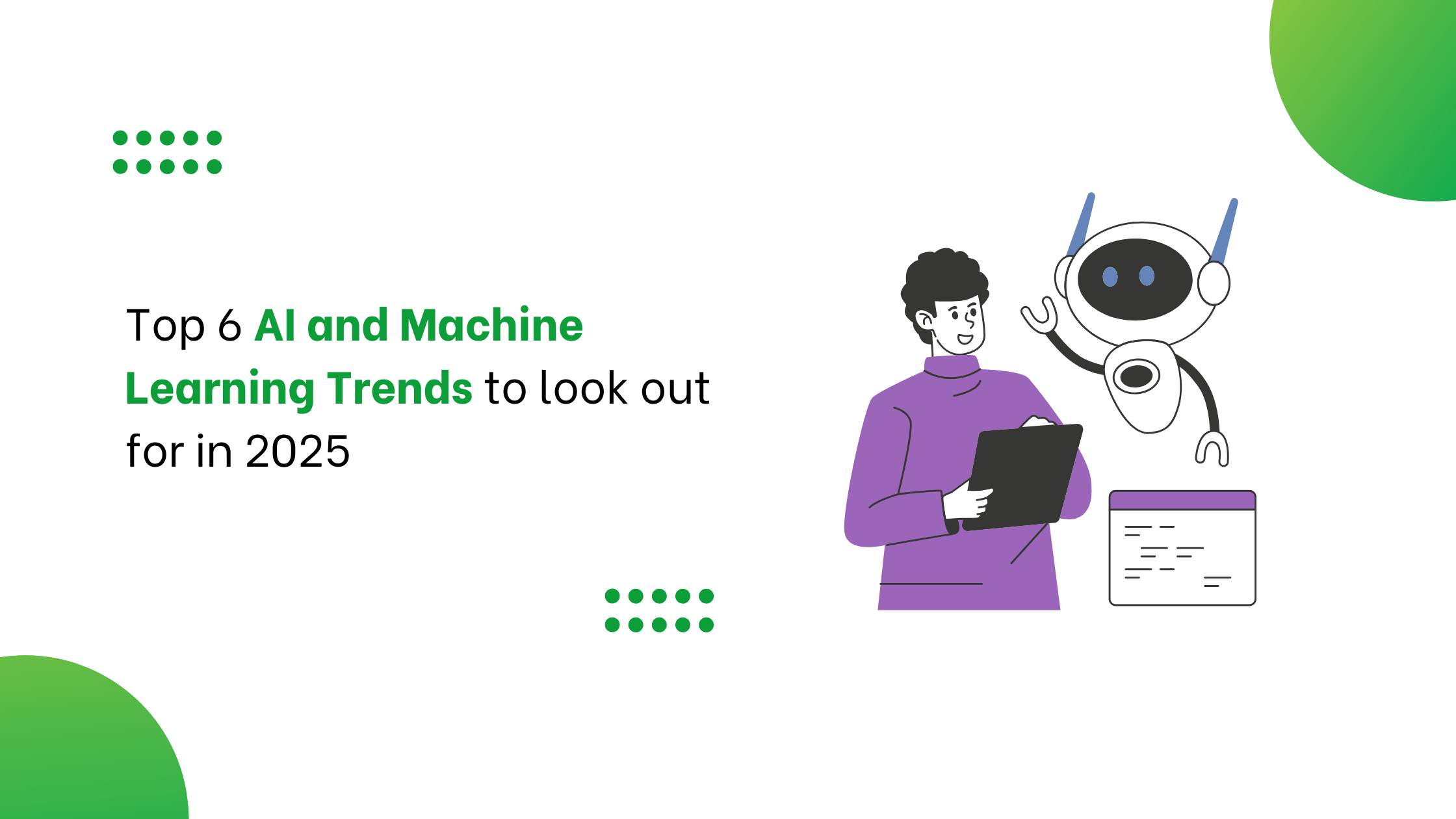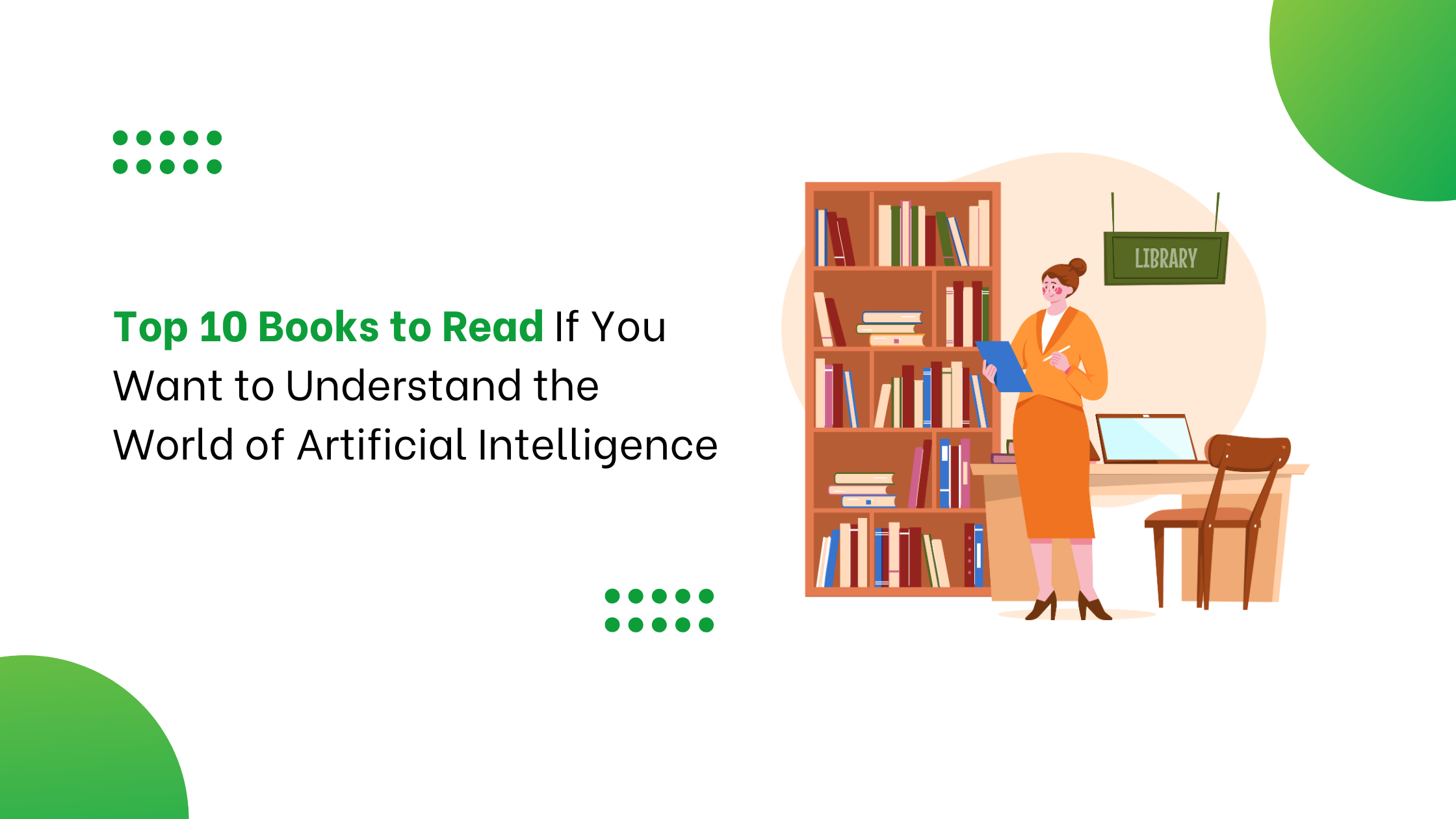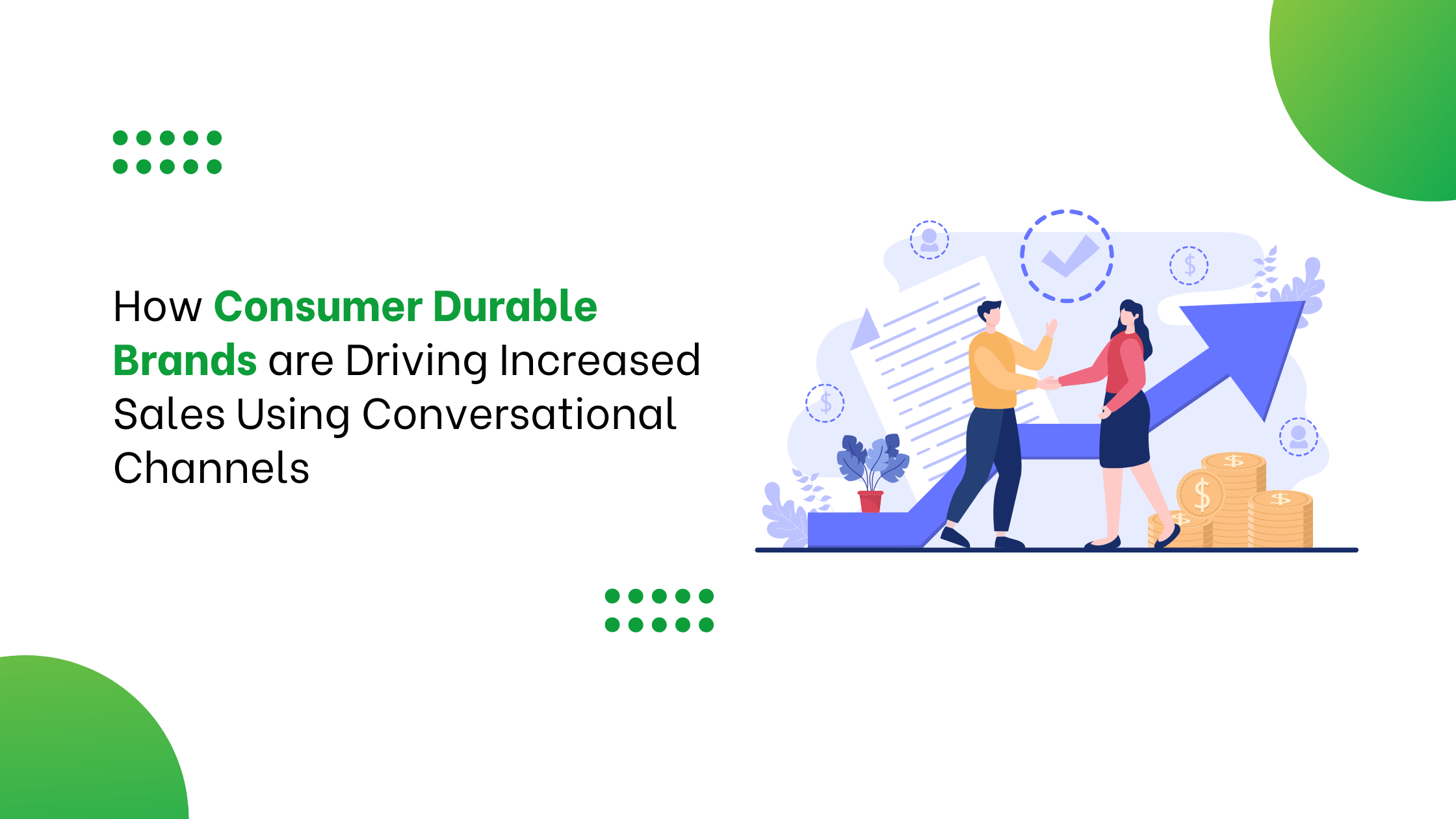Humans have been fascinated by the use of Artificial Intelligence as a digital medium to every problem at hand, and the BFSI industry is no different.
Let’s take a deeper look at how conversational AI and virtual assistants positively impact the Banking and Financial Services industry.
1. Reduce Customer Effort:
An AI chatbot serves customers effortlessly by transferring contextual information across digital touchpoints through intent identification and omnichannel presence. This allows better control over the customer experience online.
2. Ease of Use:
Conversational AI and Virtual assistants enable more automation and are easier to use than traditional banking apps and websites. There is no download required as it can be deployed on popular messaging channels and apps, making it easier to deliver support.
Several companies in the BFSI sector are currently working on projects to tap into social platforms like Facebook, WhatsApp, Instagram, etc., to stay in touch with their customers.
Over the last few years, social platforms are an increasingly popular medium for customers to interact. Therefore, it is also convenient for companies to have a healthy relationship with their consumers.
3. Personalized Interaction:
Customers nowadays want a personalized yet quick response to their concerns and inquiries. As a result, conversational AI has established a vital position in the BFSI industry.
Banks can provide adequate services to their customers with chatbots and virtual assistants without investing a lot of time, money, or man hours.
With Conversational AI tools, companies can understand customer behavior patterns, life events, and important moments so that customized offers and tailored products can be offered for any time in a customer’s life.
4. Smart Advisor:
AI chatbots can analyze the customer’s data and deliver insights to improve their financial management. Based on this information, virtual assistants can offer individualized financial advice. From purchase patterns, spending behavior, ideal insurance plans, and credit information to budget planning and cost savings, AI-enabled virtual assistants are fully equipped to be personal money managers.
5. Lead Nurturing & Sales:
Conversational AI has proved its mettle for being one of the most reliable techniques to generate warm leads. Unlike a human sales force, a chatbot has access to various customers across the omnichannel buyer journey. Moreover, chatbots are armed with a repository of customer insights that can be processed at lightning speeds. This makes them uniquely suited to filtering large potential customers through the sales funnel. An AI-powered chatbot for BFSI also helps automate lead prioritization in real-time, based on its conversations and data collected from prospective customers.
6. 24/7 Customer Support:
A virtual assistant can engage with customers, solving their problems and escalating their more complex demands. The service offers a real-time filtering system that can significantly reduce the workload on your customer support staff. AI-powered virtual assistants can resolve up to 80% of customer queries, saving time and resources.
7. Omni-Channel Digital Experience:
With an AI chatbot, it is possible to seamlessly enable organic customer communication across all channels. Banks can even utilize analytics to understand better the routes customers take to reach banking & finance services. It will help ensure prospective and existing clients receive an efficient, engaging, productive, and relevant digital experience.
8. Lower Operational Costs:
A virtual assistant must be trained and has a one-time development expense before managing thousands of customers across multiple channels. Moreover, building a virtual assistant that functions across customer touchpoints are less expensive than developing a customized application, primarily when operating on a cloud-based framework. The organizations of the BFSI industry should expect a significant decrease in the cost of collecting, nurturing, and managing customers, with an AI-enabled virtual assistant being at the forefront of the digital customer experience.
9. Tackling CoVID-19 lockdown restrictions:
Customer service operations have the most difficulty adapting to remote work due to the compulsory work-from-home culture. In contrast, the customers struggle to receive support in the form of required information promptly, which results in a massive backlog of requests for help, delayed answers to customer questions, and inundation of unanswered calls and emails for the companies.
10. Feedback Management:
For any business, customer feedback is essential. The same is true in the BFSI industry, as virtual assistants can provide valuable feedback via numerous online surveys and questionnaires. In this way, banks can acquire the feedback data they need without conducting physical surveys.
11. New Accounts:
Customers can open new accounts for respective banks with virtual assistants because of their explanation powers. A comprehensive automation system like the bot can persuade them that banks offer the best services and convenience.
12. Insurance Sales:
The insurance sector is one of the most profitable financial products of the banking industry. It provides capital to banks that can be invested into assets that keep these institutions afloat in times of economic hardship. For insurance sales, banks frequently rely on physical human representatives who persuade customers one on one about the benefits of a good insurance plan. This can drastically change with AI-enabled banking virtual assistants who can utilize important, financial, and personal customer history to offer insurance plans best suited for the customer and offer recommendations.
13. Locator Services:
With the help of virtual agents, customers can find the nearest ATM or branch to conduct important transactions and receive assistance. Though most banking services are expected to go digital in the coming years, some essential banking operations can remain physical. Bots can help find the branch customers can visit in close areas.
14. Bot-Agent Joint Operations:
After the initial questionnaire, conversational AI tools like chatbots can handle live agents’ cases or queries. Sales pitches can then be developed based on this information. Such an ecosystem can ensure growth for banking institutions and maintain human integrity and employment.
15. Fraud Prevention:
AI can examine the patterns of payments in a given account. It can validate any resemblance to the indicators that point to fraud. It is where Conversational AI chatbots may be used for fraud protection and to connect with consumers for transaction confirmation. AI chatbots can identify fraud at any time of day. It implies that if there’s any unusual activity in the bank account, the system is programmed to temporarily stop it and notify the user.
Gen-AI Financial Assistant: The Next Generation of BFSI Industry
Historically, banks have given instruction or planning templates to assist with budgeting and general financial wellbeing. That isn’t good enough anymore. Millennials prefer financial applications that “do it for me” or have AI assistance.
This is because millennials and subsequent generations are accustomed to digital services that provide rapid and meaningful data-driven insights. As banks compete with fintech giants to create more and better insights, pairing these insights with ORI’s Convert powered by Conversational AI will genuinely transform the engagement model.
Ori in the form of a Gen-AI-powered Agent, serves as a financial coach in your customer’s pocket. When a flexible Virtual Assistant delivers insights in natural language, customers can interact with, increasing engagement and the potential for positive outcomes.
These assistants can take loyalty to the higher levels in banking. When customers get an alert or text that a bill is due, they do not want to make a mental note or click on a link only to navigate a few menus. The expectation is to have a virtual assistant follow-up with a question of what date to set up the payment for, then complete the setup right there in the chat or voice session.
As customers leverage the Conversational AI tools and its enhanced engagement method for routine tasks, they will derive a better service and outcome and explore similar solutions. Each open to exploring Convert represents higher engagement, better service, and lower cost-to-service for the companies.
As new features get added with the evolution of tools, the customer data gathered becomes a feedback loop to guide better product offerings and more personalized insights. Conversational AI also help banks cross-sell. Using virtual assistants as 24/7 financial coaches will increase customer loyalty and produce better economic outcomes, which are essential for companies in the BFSI sector.
The Bottom Line:
The automation platforms of today are more intelligent, combining cognitive learning technologies with machine learning. This is clear evidence of AI’s unique value proposition for the BFSI sector.
By scaling up conversational AI investments, the business models in the BFSI sector will inevitably change, mandating enterprises to reinvent processes and create a productive ecosystem. Cost efficiencies and adapting to customer needs and niche offerings will shape businesses.
However, the roadmap to conversational AI adoption is not without obstacles. Amongst various challenges, access to skilled talent, the right vendor, choosing suitable models, and effective training practices – need to be addressed.
If you are facing any of these issues, and looking for a partner who can help you eliminate these problems while driving effective adoption, schedule a demo with our experts today.
